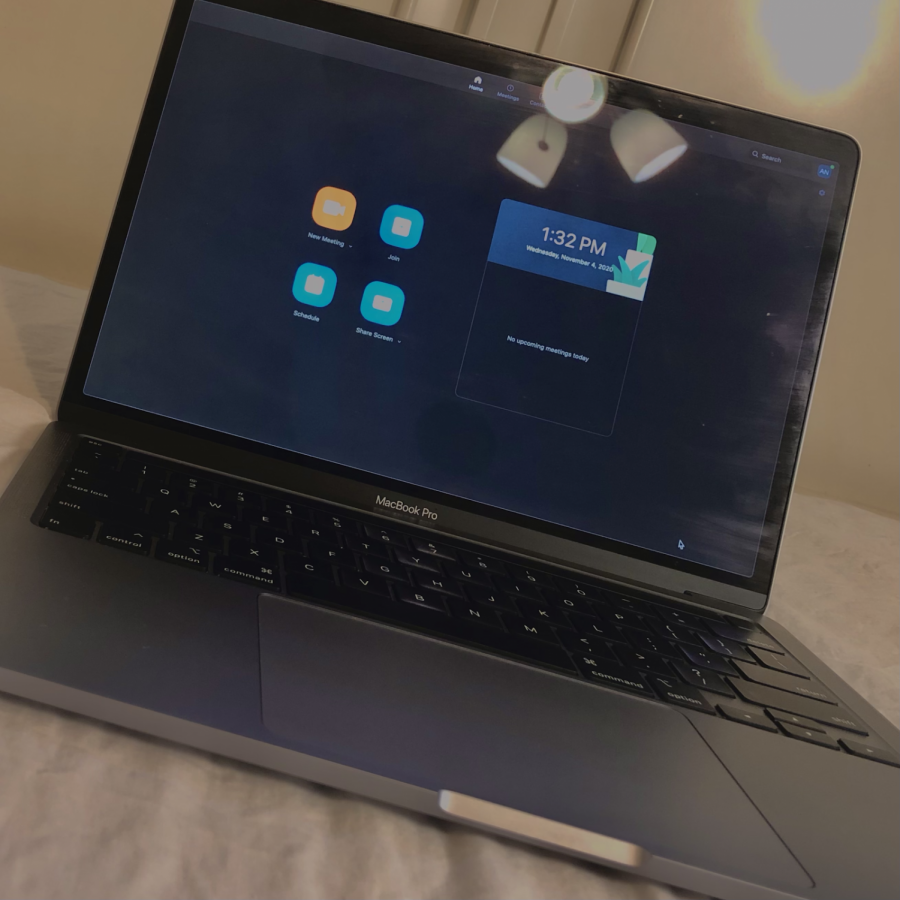Improving Your Emotional, Mental, and Physical Health During Remote Learning
“The longer the class, the bigger the frustration,” said Harrison Sherman, a New York City college student, regarding virtual schooling during the Coronavirus pandemic.
When much of the world first shut down in March 2020 to combat the outbreak of the novel Coronavirus pandemic, the future seemed uncertain. Not even the self-proclaimed greatest nation in the world was prepared for this global pandemic. One thing was certain, however. Learning for students around the world must continue. Education would go on, whether or not it occurred in a physical school building.
For many school districts across the world, it was decided that school would move online as a means of reducing the risk of spreading and contracting COVID-19. Via Zoom and Google Meets meetings, teachers are able to connect with students in a virtual classroom and to teach their curriculums virtually. Around the world, laptops and other devices, such as iPads and tablets, were distributed to students, and learning continued.
However, this new world of largely remote learning has not come to pass without some negative consequences. Among all of the other problems that virtual learning has presented to parents, teachers, and students alike, a significant but mostly neglected concern has been the increased exposure to computer screen-time and blue light exposure.
Virtual schooling, paired with the lack of in-person interaction that comes from staying at home during quarantine, has its downsides. Spending hours in front of a computer screen can take a toll on both the physical and mental health of students. Motivation to complete work remotely is more difficult for many students, without in-person teacher and peer feedback. Farah Haider ’21 noted that she struggles with finding “enough motivation to complete my assignments,” a common problem that many students are experiencing during this time of remote learning.
Although teachers worldwide have made an effort to practice leniency when evaluating the performance of their students during this unprecedented and stressful time, it seems that in some school districts, they do not take into account that their workload has increased with their remote learning classes, when compared to their in-person classes pre-COVID. Since teachers can not see their students in person and converse with them as easily beyond the limited timeframes of virtual classrooms, they may not quite understand exactly how their students are affected by all the work. At Bronx Science, all teachers have given their students surveys to assess their workload and the time that students are taking to complete their assignments, and the Bronx Science teachers have adjusted their remote teaching workload, accordingly.

On the other hand, the new virtual learning environment has proven to improve the mental health of some students. “It’s been nice because I get to sleep in more, now that I no longer commute to school, which helps me to be less stressed,” said Amelia Volpe ’21. “I feel like it’s a lot of pressure taken off me,” said Alina Chan ’21.
The alleviation of other factors that typically come with being a high school student such as the commute, the weather, early mornings, late nights, clubs, and extracurricular activities seems to make virtual school slightly easier for the majority of students at Bronx Science.
For students with learning disabilities, however, there are other often overlooked realities they face while learning virtually.
Farzana Ahmed, a college student residing in Canada said, “Managing my disabilities is much more difficult. My ADHD is not fit for the environment we’re in right now especially with remote independent learning.” The situations of students who struggle with learning disabilities must be acknowledged and their needs must be addressed to as the world adjusts to these unprecedented times.
Stress is the common theme of the Coronavirus pandemic, for students and adults alike. Stress occurs no matter what life is like, and is, unfortunately, is a given. The difference between pre-Covid times and now is that over the course of many years, people have learned to manage, cope, and deal with their stress. Now that times have changed, and we are dealing with a novel Coronavirus pandemic, the likes of which no one has ever experienced before, new coping methods must be established. There are new sources of stress that must be navigated through, in order to maintain good mental, emotional, and physical health.
Blue light exposure is a physical stressor that many students and teachers now have to deal with, with the rise in screen time due to remote learning. It results in dry eyes that can be itchy and/or painful and can make it difficult to sleep. This can be helped by wearing lenses that filter out blue light from your screen, eating foods that help you to sleep, and going to sleep earlier rather than later.
It is also important to spend time outside. Getting fresh air is necessary for us in order to improve our mental focus. As long as social distancing is observed and masks are worn, students and everyone should take the time to go for a walk or a run in a daily basis. Eat outdoors or just get outside and get some fresh air and sunlight.
“Exposure to sunlight is thought to increase the brain’s release of a hormone called serotonin. Serotonin is associated with boosting mood and helping a person feel calm and focused,” said Rachel Nall of Healthline. Timothy J.Legg Ph.D, noted that “decreased sun exposure has been associated with a drop in your serotonin levels, which can lead to major depression with seasonal patterns.” Sunlight is absolutely necessary when it comes to mental health and stress alleviation.
Other coping mechanisms include reading physical books to reduce screen time, dancing, keeping a journal with a traditional pen and paper, taking naps in between classes when possible, consuming less sugar, and pursuing artistic expressions such as painting and drawing.
The alleviation of other factors that typically come with being a high school student such as the commute, the weather, early mornings, late nights, clubs, and extracurricular activities seems to make virtual school slightly easier for the majority of students at Bronx Science.
Akunna Njoku is a Staff Reporter for 'The Science Survey.' For Akunna, the most appealing aspect of journalistic writing is that the process involves collecting...

